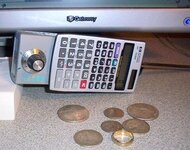LM
Hero Member
Securities & Exchange Comission employs "fake locators" to teach lesson
I just remembered this the other night and felt it appropriate to post here. This was a pretty popular 'education tool' in the investing world about 8 years back. Unfortunately, the the SEC stopped maintaining the site as of literally 7 days ago but there's plenty of online chatter out there about it. Google McWhortle.com.
The basic idea was that a totally fake company and a totally fake device could be presented in such a way that people would 'believe' in what they were saying and invest in the scheme. They (SEC) employed the same fradulent sales tactics that LRL and other purveyors of bogus wares like to use (citing psuedo-scientific jargon, making great claims of high performance, naming "agencies" and "governments" that use their device, etc, etc).
The problem was, none of it existed... The idea was that by the time you click through to learn more about their IPO, there was a lander page that warned the entire thing was a hoax and how you should be careful of what you believe in since science had yet to invent such a device...
Here's an article on the SEC effort to educate how easily people can be steered astray.
http://www.ethicsscoreboard.com/sites/0407_mcwhortle.html
I just remembered this the other night and felt it appropriate to post here. This was a pretty popular 'education tool' in the investing world about 8 years back. Unfortunately, the the SEC stopped maintaining the site as of literally 7 days ago but there's plenty of online chatter out there about it. Google McWhortle.com.
Now, for the first time, McWhortle Enterprises is offering a product to the general public: the new Bio-Hazard Alert Detector. Running quietly on two double-A batteries, the Bio-Hazard Alert Detector emits an audible beep and flashes when in the presence of all known bio-hazards. The Bio-Hazard Alert Detector, measuring only 3 by 7 inches, is small enough to slip into a man's jacket pocket, a woman's purse or a child's backpack.
The basic idea was that a totally fake company and a totally fake device could be presented in such a way that people would 'believe' in what they were saying and invest in the scheme. They (SEC) employed the same fradulent sales tactics that LRL and other purveyors of bogus wares like to use (citing psuedo-scientific jargon, making great claims of high performance, naming "agencies" and "governments" that use their device, etc, etc).
The problem was, none of it existed... The idea was that by the time you click through to learn more about their IPO, there was a lander page that warned the entire thing was a hoax and how you should be careful of what you believe in since science had yet to invent such a device...
Here's an article on the SEC effort to educate how easily people can be steered astray.
http://www.ethicsscoreboard.com/sites/0407_mcwhortle.html






